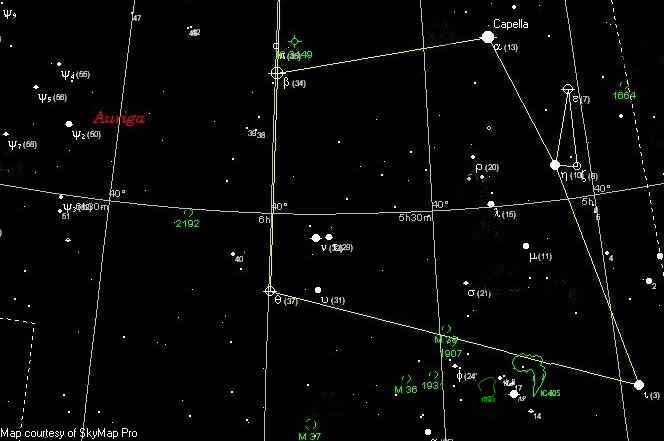
AURIGA

Auriga, the charioteer, is one of the most conspicuous constellations of the late winter and spring. It is dominated by first magnitude star Capella which is actually a spectroscopic binary, separation 0.04", separated using interferometric techniques. The two star are 42 light years away, relatively close, and yellow in colour, of spectral types G0 and G5 and of masses 2.67 and 2.55 times the sun. The stars are thus quite similar to the sun. The system is actually a distant member of the Hyades group in Taurus. There are three Messier Open Clusters in Auriga, M36, M37 and M38, all impressive objects. Discovered by Messier in 1764, M37 is perhaps the best, at magnitude 5.6 and 24' across it should be viewed at low power. The total stellar population is in excess of 500, the brightest being magnitude 9.2. Two other objects of interest reside in this constellation, NGC1931, is a bright nebula with an embedded cluster of stars. Easily seen in small scopes, at magnitude 10.1 and 3' across, it is a less well known object that is worthy of seeking out. Another object, IC405, is a large nebula (37' x 19') known as the flaming star nebula and is associated with the star AE Auriga. This one needs dark skies, low power and ideally a nebular filter to be glimpsed. NGC1893 is another bright nebula with an embedded cluster that looks good in photographs.